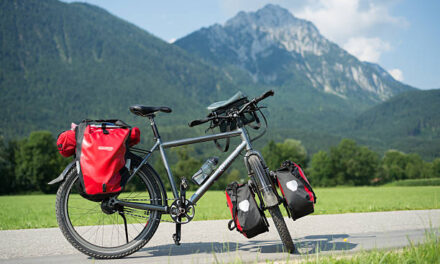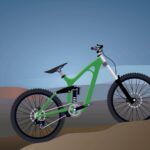Bicycle fat bikes truly embody the spirit of adventure and adaptability in cycling. Their oversized tires, often more than 3.8 inches wide, dramatically distinguish them from standard bicycles, providing unique benefits that enhance riding experiences across a variety of terrains.
These bikes excel in conditions where traditional bikes falter. The wide footprint of bicycle fat bike tires acts similarly to snowshoes for a bicycle, spreading the rider’s weight over a larger area. This feature allows for a ‘floating’ sensation over soft ground, making them ideal for snowy landscapes where typical bikes would sink and lose traction.
Table of Contents
Beyond their prowess in snowy conditions, fat bikes offer an unparalleled grip on a multitude of loose surfaces, such as sand and mud. The wide tread engages more effectively with the terrain, granting riders superior control and stability. Additionally, the large volume of air in fat bike tires serves as a natural shock absorber, smoothing out the ride over rough, uneven paths.
Perhaps the most compelling aspect of bicycle fat bike is their year-round versatility. They are not confined to a single season but are instead capable of tackling diverse environments, from sandy beaches and muddy trails to snowy paths. This adaptability makes fat bikes a fantastic option for adventurers looking to push the boundaries of where a bicycle can take them, offering the freedom to explore the great outdoors in ways previously unimaginable with traditional cycling equipment.
Bicycle Fat Bike: Ultimate Guide for Adventure Riders
This comprehensive guide delves into the world of bicycle fat bikes, equipping you with the knowledge to make informed decisions and embark on unforgettable cycling adventures.
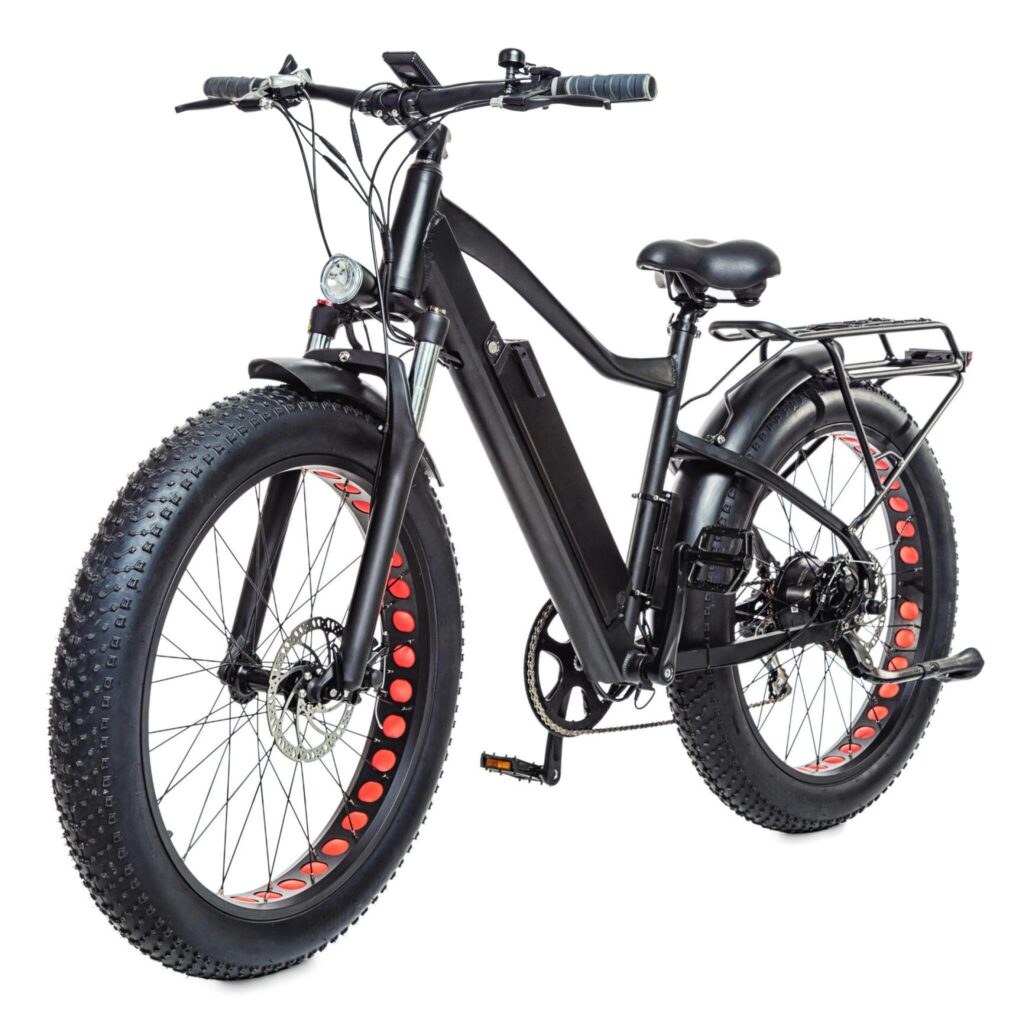
Unveiling the Fat Bike: A Breed Apart
The defining characteristic of a fat bike lies in its wide tires, ranging typically from 3.8 to 5 inches in width. Compared to standard mountain bike tires, these colossal cushions of rubber offer unparalleled traction, stability, and flotation.
Increased Surface Area:
The expansive footprint of fat bike tires translates to a greater contact patch with the ground. This translates to superior grip on loose surfaces like sand, snow, and mud, allowing you to maintain control and navigate challenging terrain with confidence.
Lower Tire Pressure:
Unlike their narrower counterparts, bicycle fat bike tires are designed to be run at significantly lower air pressure. This increased compliance allows the tires to conform to the terrain, absorbing bumps and obstacles for a smoother, more comfortable ride.
Enhanced Flotation:
The larger air volume in fat tires acts like a natural suspension system, providing exceptional buoyancy on soft surfaces like snow and sand. This enables you to float effortlessly over uneven terrain, keeping you moving forward without getting bogged down.
Beyond the Tires: Key Features of Bicycle Fat Bikes
While the wide tires are the undeniable stars of the show, several other key features contribute to the overall capability and performance of fat bikes:
Sturdy Frames:
Built to endure the rigors of off-road riding, bicycle fat bikes typically boast robust frames constructed from aluminum, chromoly steel, or even carbon fiber. These frames are designed to handle the additional stress of wider tires and challenging terrain.
Fork Options:
Fat bikes can be found with either rigid forks for a lightweight and efficient ride or suspension forks for enhanced comfort and control on rough trails.
Wheel Size:
While historically using a 26-inch wheel size, modern bicycle fat bikes are increasingly incorporating 27.5+ or 29+ wheels. These larger wheels offer improved rolling efficiency and better handling over technical terrain.
Brakes:
Disc brakes, either hydraulic or mechanical, are the preferred choice for bicycle fat bikes due to their superior stopping power in all weather conditions.
Drivetrain:
Gearing options on fat bike often favor wide-range cassettes with a low gear ratio to provide sufficient power for tackling steep inclines and challenging terrain.
Handlebars:
Wide handlebars provide increased leverage and control when navigating technical sections of the trail.
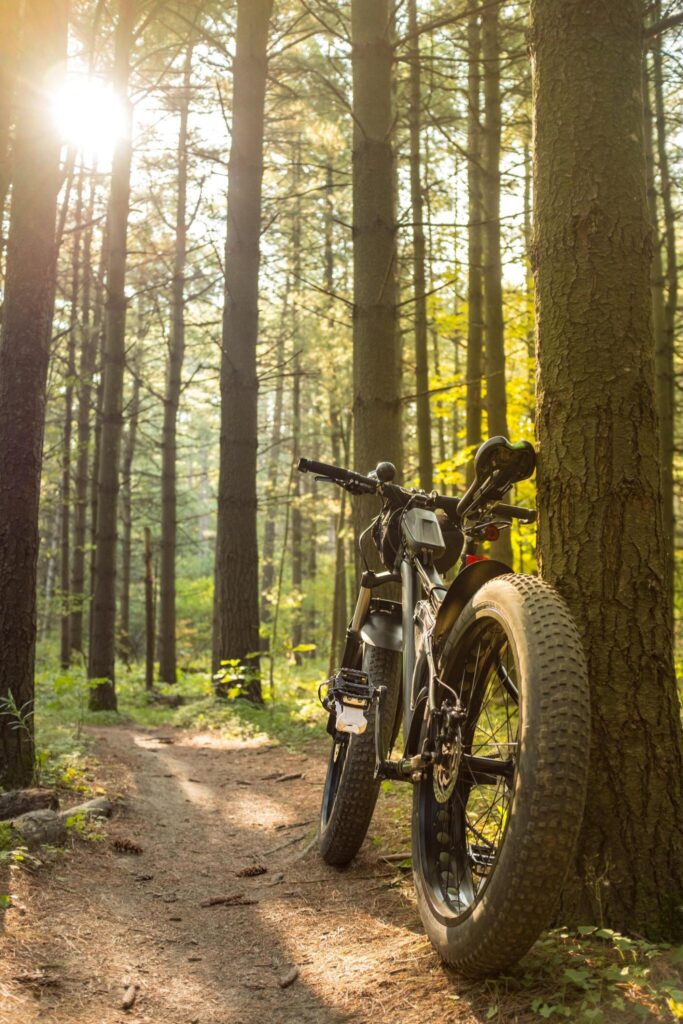
Embarking on Your Fat Bike Adventure: Gearing Up
Now that you’re familiar with the core components of a fat bike, it’s crucial to equip yourself for the adventure ahead. Here’s a breakdown of essential gear to consider:
Clothing:
Dress appropriately for the conditions you’ll be riding in. Layering allows for better temperature regulation, and opting for water-resistant or windproof gear is essential for adverse weather conditions.
Footwear:
Sturdy shoes with good grip are vital for maintaining control on the bike. Opt for shoes with aggressive treads if you’ll be tackling loose or wet terrain.
Safety Gear:
A properly fitted helmet is non-negotiable. Consider additional protective gear like gloves, knee pads, and elbow pads depending on the technical difficulty of the trails you’ll be riding.
Accessories:
Essential accessories include a pump, spare tube, and a multi-tool to address any mechanical issues on the trail. Fenders are also useful for keeping mud and debris at bay, especially during wet rides.
Conquering New Horizons: Where to Ride Your Fat Bike
The beauty of fat bikes lies in their versatility. Here are some of the unique terrains where fat bikes truly shine:
Snow:
Fat bikes are the ultimate winter riding machines. Their wide tires provide ample floatation on snow, allowing you to explore snow-covered landscapes and enjoy the thrill of winter cycling.
Sand:
Hitting the beach on a fat bike adds a whole new dimension to cycling. The large tires conquer loose sand with ease, making coastal explorations a breeze.
Mud:
Forget about getting bogged down in muddy trails. Fat bikes plow through mud effortlessly, keeping you moving forward on even the wettest paths.
Mountain Trails:
Fat bikes can handle single-track trails surprisingly well. While their wider turning radius might require a slightly different approach compared to regular mountain bikes, their superior traction and stability can be advantageous on loose climbs and technical descents.
Exploring the Great Outdoors:
Fat bikes are perfect for bike packing adventures. Their robust nature allows you to carry additional gear and supplies, making them ideal for exploring remote locations and embarking on multi-day journeys.
Choosing Your Perfect Fat Bike: A Buyer’s Guide
With a plethora of fat bike options available, selecting the right one can feel overwhelming. Here are some key factors to consider:
Frame Material:
Aluminum offers a good balance of affordability and weight. Chromoly steel is known for its durability and slightly softer ride feel. Carbon fiber provides the lightest weight but comes at a premium price.
Tire Size:
3.8-inch tires are a good starting point for most terrains. Wider tires (up to 5 inches) offer increased floatation on snow and sand but can feel slightly sluggish on hard pack surfaces.
Fork Options:
Rigid forks are lighter and more efficient for smoother terrain. Suspension forks provide added comfort and control on technical trails.
Drivetrain:
Look for a wide-range cassette with a low gear ratio for tackling challenging climbs. Consider the number of chainrings based on your riding style and the terrain you’ll be conquering.
Brakes:
Hydraulic disc brakes offer superior stopping power in all weather conditions.
Beyond the Purchase: Maintaining Your Fat Bike for Peak Performance
Regular Cleaning:
After every ride, especially in wet or muddy conditions, thoroughly clean your bike to prevent rust and ensure smooth operation.
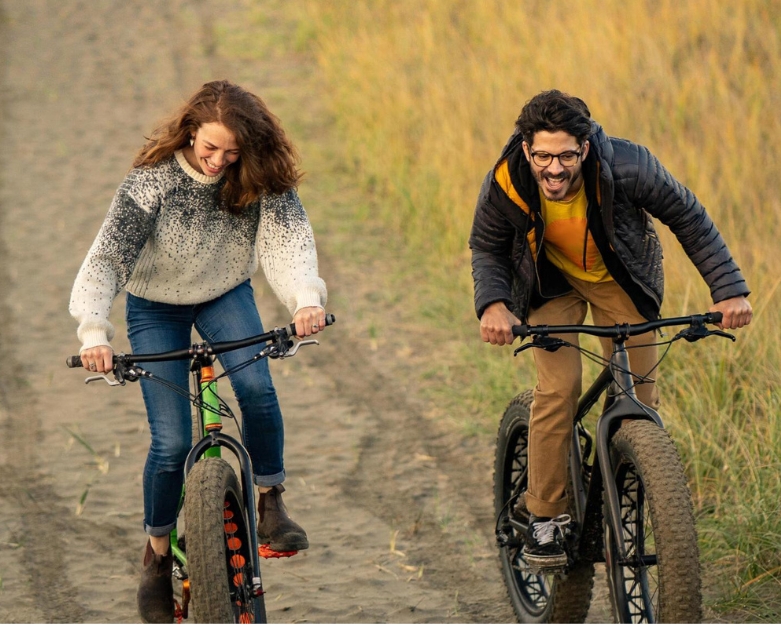
Tire Pressure:
Adjusting tire pressure based on the terrain is crucial. Lower pressure for softer surfaces like snow and sand, and slightly higher pressure for firmer ground.
Drivetrain Maintenance:
Keep your chain clean and lubricated for optimal shifting performance.
Regular Inspections:
Inspect your bike regularly for any loose components, worn-out parts, or potential damage.
The bicycle Fat Bike Community: Joining the Pack
The bicycle fat bike community is a welcoming and enthusiastic group. Here are some ways to connect with fellow fat bike enthusiasts:
Online Forums and Communities:
Several online forums and social media groups dedicated to fat biking offer valuable information, ride recommendations, and a platform to connect with other riders.
Local Bike Shops:
Support your local bike shop and connect with the staff and other customers who share your passion for fat biking. They can be a great resource for finding local trails, repairs, and advice.
Organized Events:
Many areas host fat bike races, group rides, and festivals throughout the year. Participating in these events is a fantastic way to experience the thrill of fat biking with others and discover new trails.
Conclusion
Bicycle fat bikes have revolutionized the way we explore the outdoors. Their unique capabilities open doors to new adventures, allowing you to conquer diverse terrains and experience the joy of cycling in all its glory. By understanding the core aspects of fat bikes, equipping yourself with the right gear, and venturing out to explore, you’re well on your way to unforgettable cycling experiences. So, grab your fat bike, embrace the spirit of adventure, and get ready to carve your own path on the journey ahead.



